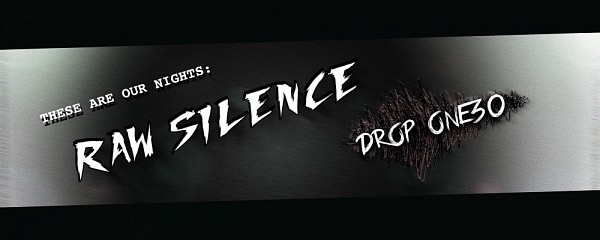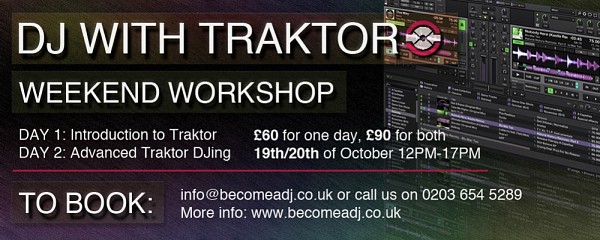
Nothing’s more frustrating than completing a course in something and then not having the opportunity to put your knowledge and talents to good use – as any University graduate with a degree in Ancient Macedonian Architecture who ended up working in the marketing department for FoxyBingo.com will happily tell you. Here at ‘Become a DJ’, we help you to achieve your ambition- if its to make DJing your career or just enjoy those goose bumping, adrenaline infused moments several times a year.
A lot of courses and training schemes come to an end, and then off you go, blinking into the wilderness, without so much as a goodbye or an obligatory wave. This hurts! You don’t know which steps to take next, then gradually lose hope and focus, and end up dumping all your DJ equipment in the nearest available skip. Why spend so much time, money and effort honing skills you won’t even have a chance to use? This is why ‘Become a DJ’ have crafted specific events and opportunities for you to showcase your abilities.
We arrange our own nights where you can experience performing live, as well as giving you the chance to meet other DJs and music industry professionals to network and collaborate with, giving you that crucial ‘In’ into the scene. You can build up your back catalogue of mixes, seeing how they go down live whilst also having an awesome night with like-minded friends and associates, not to mention other related opportunities such as podcasts and a burgeoning record label. After all, why try and make it alone when you could do it with the support, shared expertise and similar passions of your comrades?
Our nights come in two different guises. Firstly, we have our Raw Silence events once every month or so. These are Deep/Tech House nights, perfect for our students who are passionate about this genre of music, featuring superb resident DJs and the freshest talent from our course. We try and find new, left-field venue choices rather than standard bar or warehouse locations, in order to complement the music as much as possible and create an awesome ambience in which everyone can connect, make friends and concoct grand schemes. We are also building the Raw Silence record label, to release the production pieces done in our studio and podcasts featuring interviews and live guest mixes involving established DJs.
Then we have our DropOne30 nights, which showcase the best in Progressive through to Electro House. These are designed for our students aiming at that big room energy, and so the venues are chosen accordingly, including such staples of the party scene as Pacha and Ministry of Sound. These nights will also have their own podcast in order to spread the word and offer as many outlets for our students’ music as we can provide.
But a picture is worth a thousand words, so please check it out yourself. Videos, Podcasts, Dj Sets and Photos from the parties can be found at https://www.facebook.com/RawSilenceRecords and https://www.facebook.com/dropone30.
The next DropOne30 party is on the 30th of November in Pacha and Raw Silence will be taking over the whole Cargo Club on the 26th of December.

What is Djing?
In its most general definition DJing is simply selecting musical tunes and playing them in succession. As such, some DJs (let’s call them that for a second) do little more than what can be accomplished by clicking the randomize button in your iTunes library or on your iPad. But at the other end of the spectrum, the best DJs possess an uncanny ability to select the tunes in such a way that takes the unsuspecting audience on an emotional and physical journey. They string the individual songs together like movements in a symphony and creating a performance that becomes more than the simple sum of its parts. This seamless combination of songs that were written by different artists in different times, requires refined skills and technical ability that is the result of patient practice. Like musicians on their instruments DJs practice on their decks. Some might say that it is easy to make a drunk and drugged up crowd dance. But try it and if you clear the floor you’ll know……
Traditionally DJs used turntables with vinyl records. A lot of DJs who started on vinyl stayed with that format because they believe it sounds better than CDs or mp3s and the physical ritual of taking a record out of its sleeve and cuing it up on the turntable is undoubtedly enjoyable. A drawback is that playing a song is inherently linear: you start in the beginning and play toward the end, but there is no way to jump around in the song or to loop a part. Also, the tunes musical key is intimately connected to the speed at which it is played. So if you speed one tune up to match the tempo of another you will also make that record sound like a chipmunk. Most importantly however, releases are now digital, seldom vinyl, and few record shops exist nowadays where you could buy them. Building a record collection was never easy but it is almost an impossible task today. Although it must be said that with vinyl records one was more selective, buying quality music rather than downloading terabytes of tunes that are never listened to or played out. The mindless consumption of available music is not what we advocate here! Digital formats, like for example playing CDs on Pioneer decks or files directly from a laptop using a software DJing program remedy all the above limitations. On CDs it may still be difficult to take a large collection with you on the road but it is definitely possible on a laptop or on a USB stick that you can insert into the latest Pioneer decks. Also, when a song is played on a computer or on a CDJ it is loaded into RAM (Random Access Memory – NOT the Daft Punk album) and thus it is possible to jump from one part of the song to the other seamlessly and accurately. Further, the songs musical key can be made independent from the speed it’s played at. Finally, the abundance of music and its immediate availability in digital format allows for preparing for any gig. And that’s just the beginning… DJing with Traktor™Think of the advantages WORD (the text editing program from Microsoft) offers in comparison to a manual type writer and you get an idea of what it is like to use a software DJing program or a the latest Pioneer decks compared to turntables. Companies that produced software DJ applications were founded in the 90s. Traktor™ is one of the most widely used DJing software made by Native Instruments (Berlin, Germany). It runs both on Mac and Windows computers and in principle can be operated with a mouse or the computer keyboard. However, over the years the software has grown to include 4 decks and a rich set of functionality. For best effect, external hardware controllers can be used (via USB) to unlock all this functionality. Traktor™ is used by amateur as well as professional, internationally known, DJs alike. It is a favorite of beginners because its clean interface and stable operation allows learning without hindrance and interruption. Professionals favor this software because they can forge their own style and perform unique sets that are admired the world over by millions of fans! However, the ease with which a software program, such as Traktor™, allows a beginner to start with DJing should not be confused to mean an easy path to becoming a skilled and respected DJ. Those that simply use the software to hide their own inadequacies are hardly DJs. If you allow the software or Pioneer decks to beatmatch tunes (via the synch button) while you sit back and wave your arms, that’s a serious disrespect to those craftsmen who spent years practicing to do this with vinyl. With more possibilities in the modern equipment comes the responsibility that the audience and your peers expect more from you. So if you decide on digital DJing instead of vinyl the road to respectful performances will be equally long and hard earned. So? Are you ready? If you want to learn, Become a DJ will be holding two Traktor™ Workshops on the 19th and 20th of October. The 1st of these workshops will be aimed at total beginners while the 2nd will explore advanced topics. Come join us!